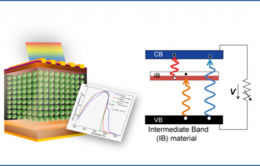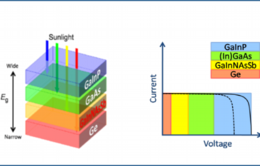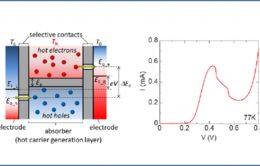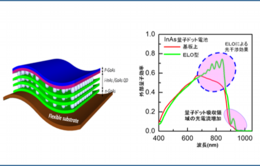

About Us
Our aim is to develop innovative photovoltaic technologies for high-efficiency compound semiconductor solar cells and materials. Our research includes crystal growth by molecular beam epitaxy (MBE), and structural, electrical, and optical evaluation of new photovoltaic materials and quantum nanostructures, as well as fabrication process and characterization of photovoltaic devices.
Research
Primary targets are; (1) to develop high-quality 1eV-bandgap GaInNAs dilute nitride semiconductors for the next-generation multijunction solar cells, and (2) to demonstrate high-efficiency quantum dot intermediate band solar cell, which enables to use photons with energies lower than the band gap energy of the absorber by optical absorption via an intermediate band, resulting in enhancement of energy conversion efficiency.
Intermediate Band Solar Cell

3D quantum dot superlattice and highly-mismatched alloys (HMAs) are studied to form a suitable intermediate band to increase the current via 2-step photoabsorption.
Multi-Junction Solar Cell

Solar cells with different bandgaps are monolithically connected via tunnel junctions or mechanically stacked to absorb a broad spectrum of solar energy.
Hot Carrier Solar Cell

Hot carriers generated in the absorber material are extracted through selective contacts resulting in a higher output voltage compared to the conventional cell.
Thin Film Solar Cell

High-quality single-crystal thin-film solar cell is removed from the substrate by epitaxial lift-off technique. The substrates can then be reused repeatedly to grow thin-film solar cells.
Device Simulation

Advanced device simulation is required to model and design quantum nanostructure solar cells.
Evaluation Technique

Characterization of each subcell in multijunction solar cells requires a careful measurement and numerical analysis.



